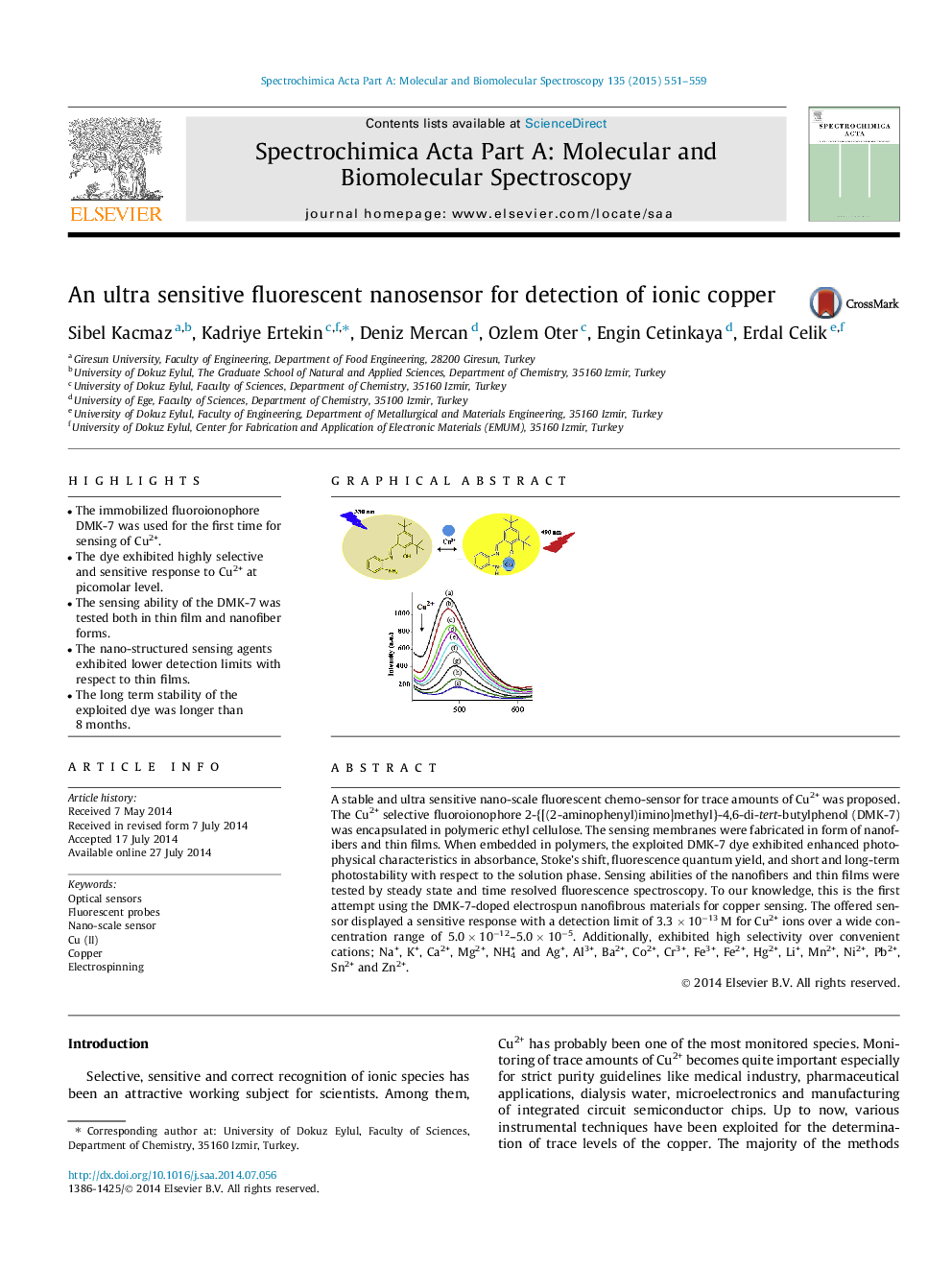| Article ID | Journal | Published Year | Pages | File Type |
|---|---|---|---|---|
| 1233223 | Spectrochimica Acta Part A: Molecular and Biomolecular Spectroscopy | 2015 | 9 Pages |
•The immobilized fluoroionophore DMK-7 was used for the first time for sensing of Cu2+.•The dye exhibited highly selective and sensitive response to Cu2+ at picomolar level.•The sensing ability of the DMK-7 was tested both in thin film and nanofiber forms.•The nano-structured sensing agents exhibited lower detection limits with respect to thin films.•The long term stability of the exploited dye was longer than 8 months.
A stable and ultra sensitive nano-scale fluorescent chemo-sensor for trace amounts of Cu2+ was proposed. The Cu2+ selective fluoroionophore 2-{[(2-aminophenyl)imino]methyl}-4,6-di-tert-butylphenol (DMK-7) was encapsulated in polymeric ethyl cellulose. The sensing membranes were fabricated in form of nanofibers and thin films. When embedded in polymers, the exploited DMK-7 dye exhibited enhanced photophysical characteristics in absorbance, Stoke’s shift, fluorescence quantum yield, and short and long-term photostability with respect to the solution phase. Sensing abilities of the nanofibers and thin films were tested by steady state and time resolved fluorescence spectroscopy. To our knowledge, this is the first attempt using the DMK-7-doped electrospun nanofibrous materials for copper sensing. The offered sensor displayed a sensitive response with a detection limit of 3.3 × 10−13 M for Cu2+ ions over a wide concentration range of 5.0 × 10−12–5.0 × 10−5. Additionally, exhibited high selectivity over convenient cations; Na+, K+, Ca2+, Mg2+, NH4+ and Ag+, Al3+, Ba2+, Co2+, Cr3+, Fe3+, Fe2+, Hg2+, Li+, Mn2+, Ni2+, Pb2+, Sn2+ and Zn2+.
Graphical abstractFigure optionsDownload full-size imageDownload as PowerPoint slide
